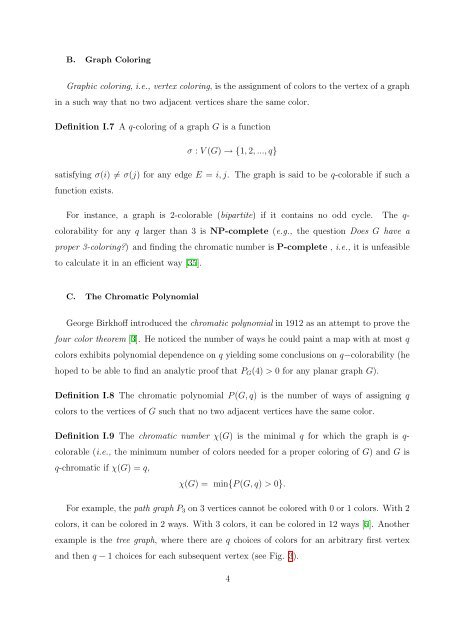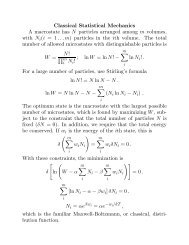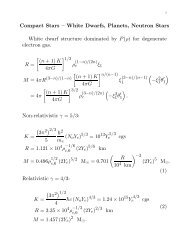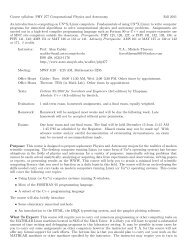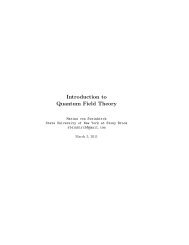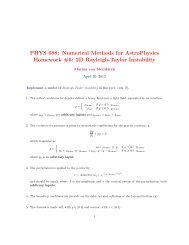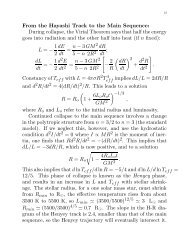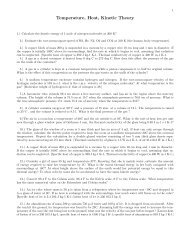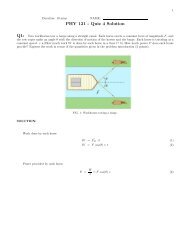On the study of the Potts model, Tutte and Chromatic Polynomials ...
On the study of the Potts model, Tutte and Chromatic Polynomials ...
On the study of the Potts model, Tutte and Chromatic Polynomials ...
You also want an ePaper? Increase the reach of your titles
YUMPU automatically turns print PDFs into web optimized ePapers that Google loves.
B. Graph Coloring<br />
Graphic coloring, i.e., vertex coloring, is <strong>the</strong> assignment <strong>of</strong> colors to <strong>the</strong> vertex <strong>of</strong> a graph<br />
in a such way that no two adjacent vertices share <strong>the</strong> same color.<br />
Definition I.7 A q-coloring <strong>of</strong> a graph G is a function<br />
σ : V (G) → {1, 2, ..., q}<br />
satisfying σ(i) ≠ σ(j) for any edge E = i, j. The graph is said to be q-colorable if such a<br />
function exists.<br />
For instance, a graph is 2-colorable (bipartite) if it contains no odd cycle. The q-<br />
colorability for any q larger than 3 is NP-complete (e.g., <strong>the</strong> question Does G have a<br />
proper 3-coloring) <strong>and</strong> finding <strong>the</strong> chromatic number is P-complete , i.e., it is unfeasible<br />
to calculate it in an efficient way [35].<br />
C. The <strong>Chromatic</strong> Polynomial<br />
George Birkh<strong>of</strong>f introduced <strong>the</strong> chromatic polynomial in 1912 as an attempt to prove <strong>the</strong><br />
four color <strong>the</strong>orem [3]. He noticed <strong>the</strong> number <strong>of</strong> ways he could paint a map with at most q<br />
colors exhibits polynomial dependence on q yielding some conclusions on q−colorability (he<br />
hoped to be able to find an analytic pro<strong>of</strong> that P G (4) > 0 for any planar graph G).<br />
Definition I.8 The chromatic polynomial P (G, q) is <strong>the</strong> number <strong>of</strong> ways <strong>of</strong> assigning q<br />
colors to <strong>the</strong> vertices <strong>of</strong> G such that no two adjacent vertices have <strong>the</strong> same color.<br />
Definition I.9 The chromatic number χ(G) is <strong>the</strong> minimal q for which <strong>the</strong> graph is q-<br />
colorable (i.e., <strong>the</strong> minimum number <strong>of</strong> colors needed for a proper coloring <strong>of</strong> G) <strong>and</strong> G is<br />
q-chromatic if χ(G) = q,<br />
χ(G) = min{P (G, q) > 0}.<br />
For example, <strong>the</strong> path graph P 3 on 3 vertices cannot be colored with 0 or 1 colors. With 2<br />
colors, it can be colored in 2 ways. With 3 colors, it can be colored in 12 ways [5]. Ano<strong>the</strong>r<br />
example is <strong>the</strong> tree graph, where <strong>the</strong>re are q choices <strong>of</strong> colors for an arbitrary first vertex<br />
<strong>and</strong> <strong>the</strong>n q − 1 choices for each subsequent vertex (see Fig. 3).<br />
4


